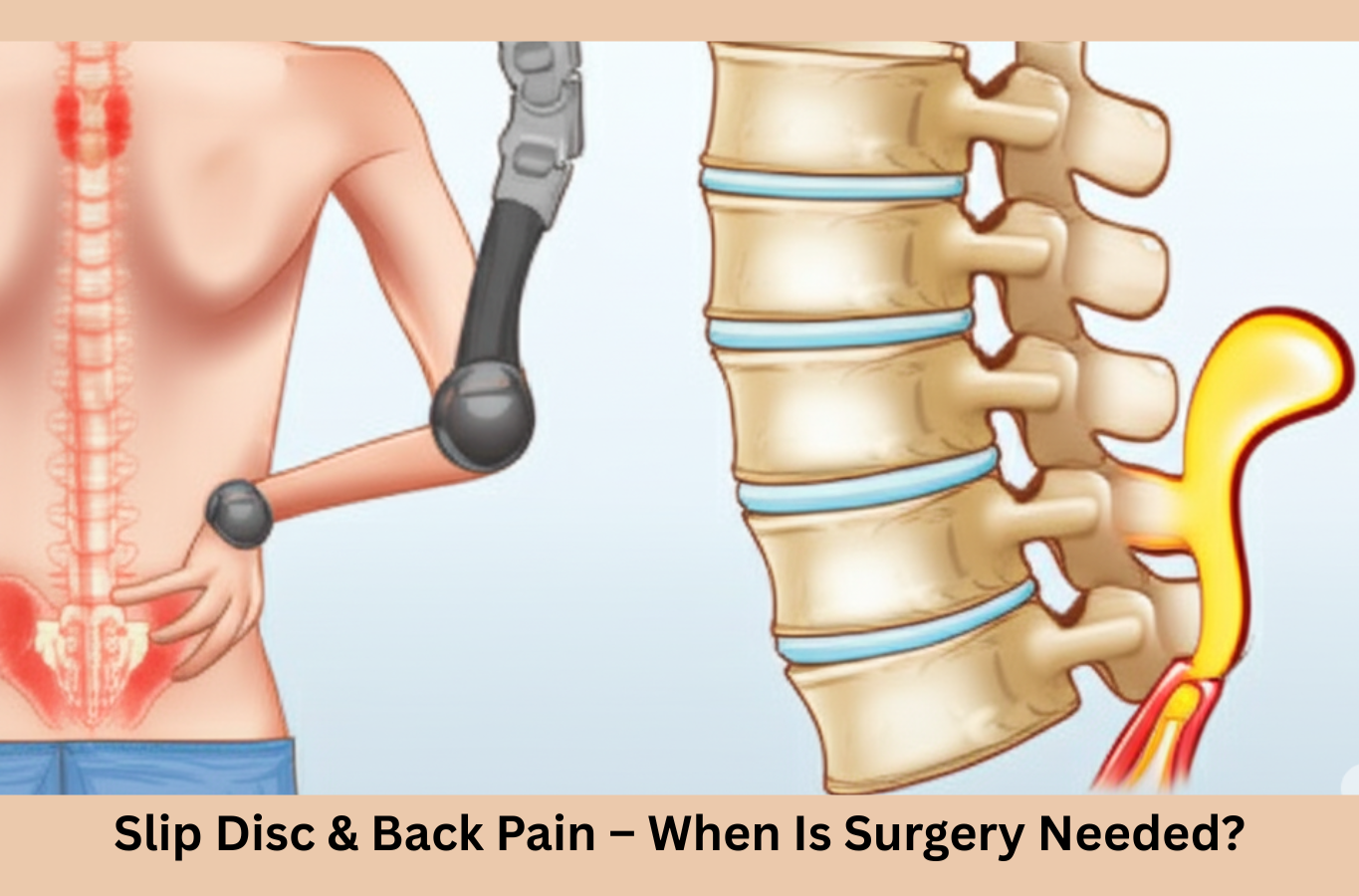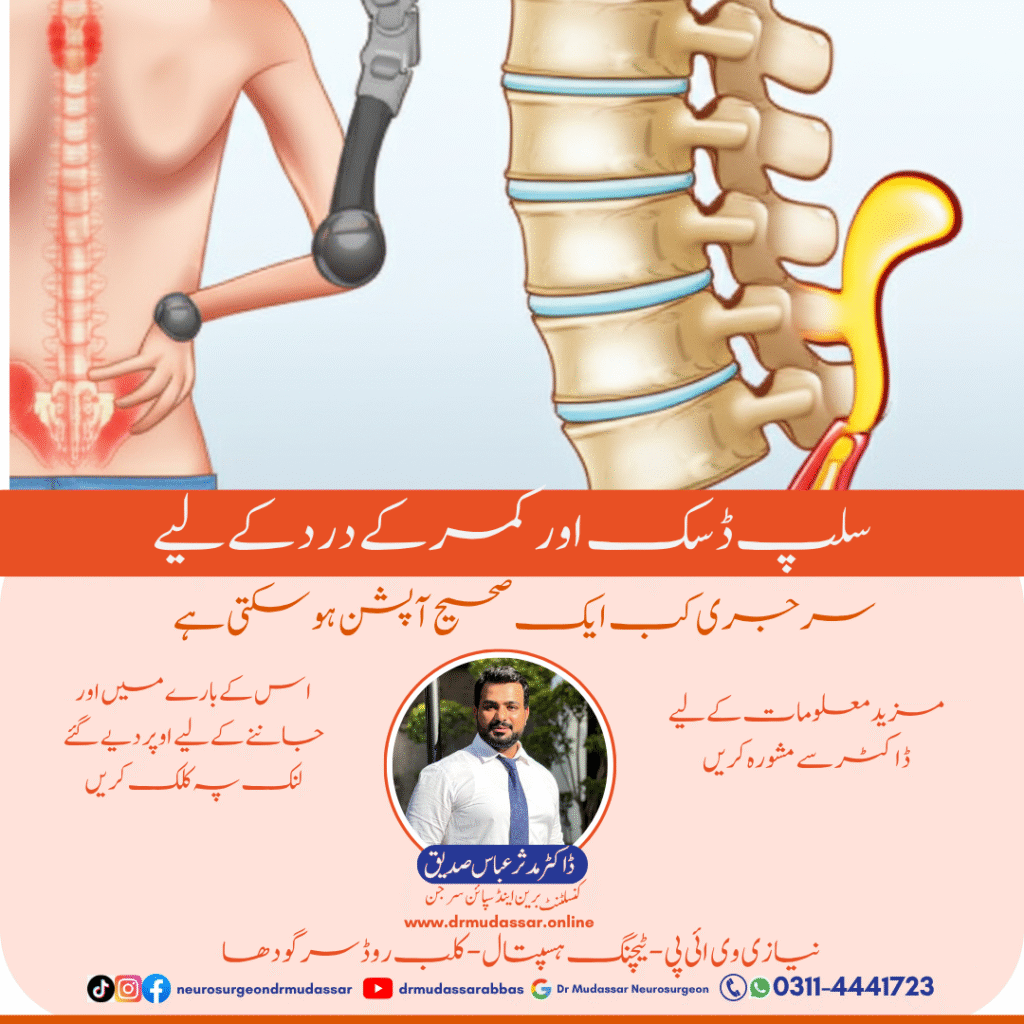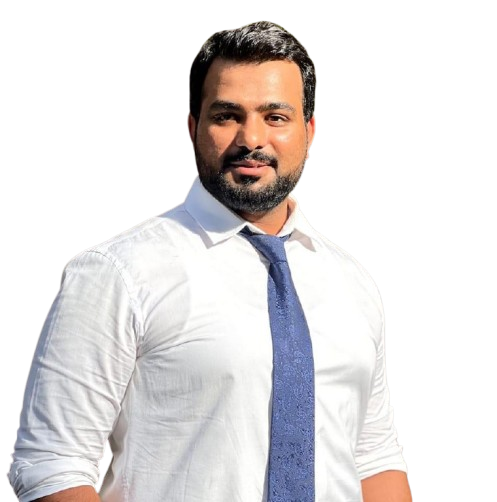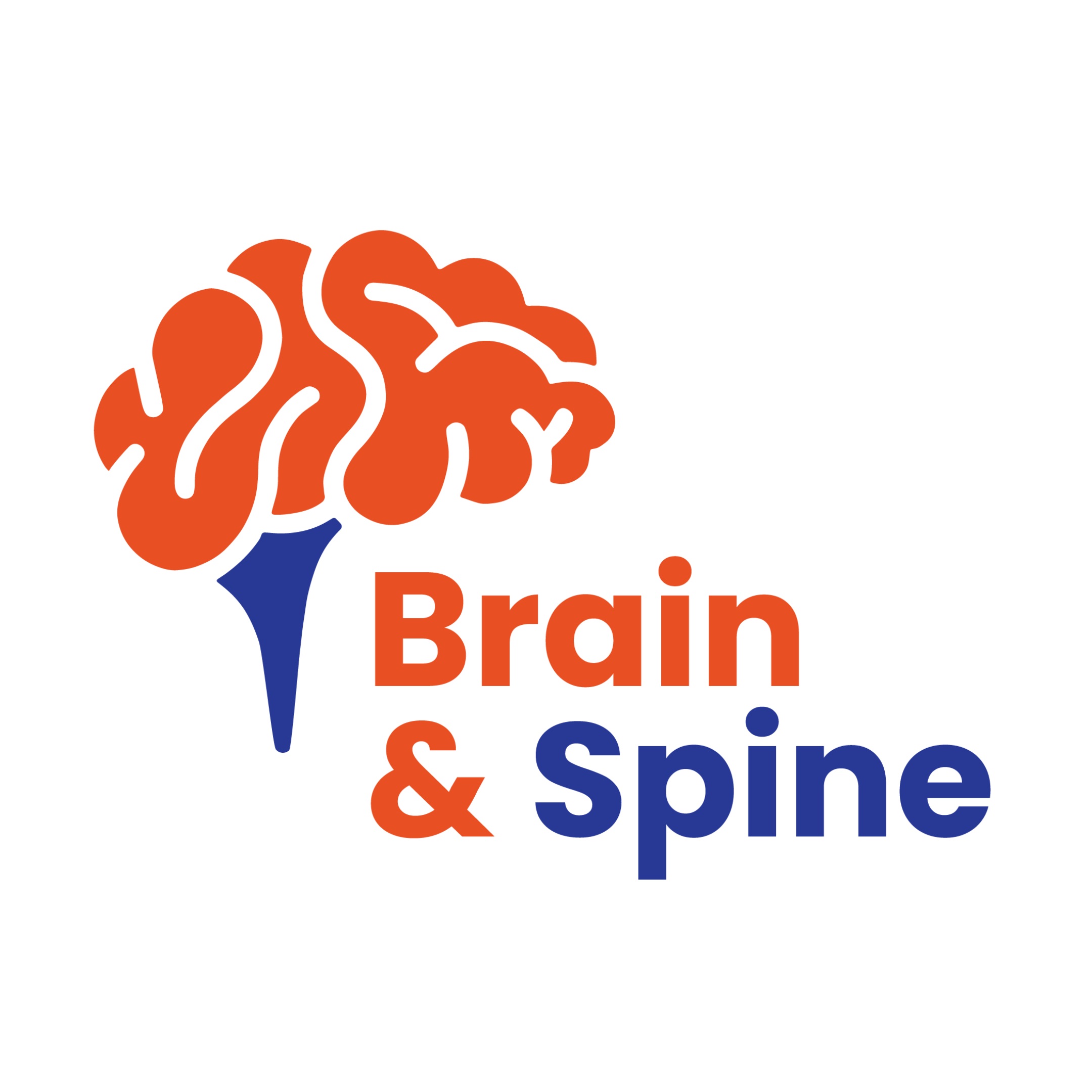
Slip Disc & Back Pain – When Is Surgery Needed?
Back pain is one of the most common health issues, but not all back pain is the same. A slipped disc (also known as a herniated disc) occurs when the soft cushion between your spinal bones slips out of place and presses on nearby nerves.
🔍 Common Symptoms:
▪ Sharp back pain radiating to the legs
▪ Numbness or tingling in arms or feet
▪ Weakness or difficulty walking
▪ Loss of bladder control in severe cases
🔧 When is surgery needed?
If pain doesn’t improve after 6–8 weeks of rest, medication, or physiotherapy — or if symptoms worsen — surgical intervention may be required.
👨⚕️ Dr. Mudassar Abbas Siddique offers expert spinal surgery using modern, minimally invasive techniques that promote faster healing and long-term relief.
کمر درد ایک عام مسئلہ ہے، لیکن ہر کمر درد معمولی نہیں ہوتا۔
سلپ ڈسک اس وقت ہوتا ہے جب ریڑھ کی ہڈی کے درمیان موجود نرم بافتہ اپنی جگہ سے ہٹ کر اعصاب پر دباؤ ڈالنے لگتا ہے۔
🔍 علامات میں شامل ہیں:
▪ ٹانگوں میں پھیلنے والا تیز درد
▪ ہاتھ یا پاؤں میں سن ہونا یا جھنجھناہٹ
▪ چلنے میں دقت یا کمزوری
▪ شدید کیس میں پیشاب پر کنٹرول کا ختم ہو جانا
🔧 کب سرجری کی ضرورت ہوتی ہے؟
اگر آرام، دوائیں یا فزیو تھراپی کے باوجود 6–8 ہفتے تک آرام نہ آئے یا علامات بڑھنے لگیں تو سرجری کی ضرورت ہو سکتی ہے۔
👨⚕️ ڈاکٹر مدثر عباس صدیق جدید اور اسپائن سرجری کرتے ہیں جس سے جلد صحتیابی اور طویل سکون ممکن ہوتا ہے۔
📍 نیازی VIP ہسپتال، سرگودھا

In More Details
Dealing with a slipped disc (also known as a herniated or bulging disc) and the associated back pain can be incredibly debilitating. While many people with a slipped disc find relief through conservative treatments, there are specific situations where surgery becomes a necessary and often highly effective option.1
Here’s a breakdown of when surgery might be needed for a slipped disc and back pain:
Understanding the Slipped Disc
Your spinal discs act as cushions between the vertebrae, allowing for flexibility and shock absorption.2 A “slipped disc” occurs when the soft, jelly-like center (nucleus pulposus) pushes out through a tear in the tougher outer layer (annulus fibrosus).3 This can then irritate or press on nearby nerves, leading to pain, numbness, weakness, or tingling, often radiating into the arms or legs (sciatica in the legs, radiculopathy in the arms).4
When is Surgery Considered?
The vast majority of slipped discs resolve on their own or with conservative treatments within a few weeks to a few months.5 Surgery is generally considered after these non-surgical options have failed to provide significant relief, or in more severe cases.6
Here are the key indications that surgery might be necessary:
1. Persistent, Severe Pain:
- If your pain is debilitating, poorly controlled by medication, and significantly impacts your daily life (e.g., trouble standing, walking, sleeping, or working) for at least 6 to 12 weeks, despite trying conservative treatments like physical therapy, pain relievers, and injections.
2. Progressive Neurological Deficits:
- Worsening Weakness: If you experience increasing weakness in your arms, hands, legs, or feet (e.g., difficulty lifting objects, tripping, or foot drop).7 This indicates the nerve compression is causing damage to motor function.
- Loss of Sensation: If you have increasing numbness, tingling, or a pins-and-needles sensation that is getting worse.8
- Loss of Reflexes: A doctor may observe diminished or absent reflexes.9
3. Emergency Situations (Cauda Equina Syndrome):
- This is a rare but serious condition that requires immediate surgical attention. It occurs when the herniated disc compresses the bundle of nerves at the end of the spinal cord (cauda equina).10 Symptoms include:
- Sudden loss of bowel or bladder control (incontinence or difficulty urinating/defecating).11
- Severe numbness in the “saddle area” (buttocks, groin, inner thighs).
- Severe weakness or paralysis in both legs.
4. Imaging and Symptoms Correlation:
- Clear evidence from imaging scans (like MRI) that shows a herniated disc is definitively pressing on a nerve, and these findings directly correlate with your symptoms.
Common Surgical Procedures for Slipped Discs:
If surgery is recommended, the goal is typically to remove the portion of the disc that is pressing on the nerve.12 Common procedures include:
- Microdiscectomy: This is the most common and often minimally invasive surgery for a herniated disc.13 It involves removing the damaged part of the disc through a small incision, often using a microscope or endoscope to visualize the area.14 Most patients experience significant, immediate relief from radiating pain.
- Laminotomy/Laminectomy: Sometimes, a small portion of the bone (lamina) covering the spinal canal needs to be removed to create more space and relieve pressure on the nerves.15
- Spinal Fusion: In rare cases, especially if there’s significant instability or if the entire disc needs to be removed, the vertebrae above and below the affected disc may be fused together with bone grafts and metal hardware. This eliminates movement at that segment but can reduce pain.
- Artificial Disc Replacement: For a select group of patients, the damaged disc can be replaced with an artificial disc, preserving some motion in the spine.16
Important Considerations Before Surgery:
- Conservative Treatment First: For most people, a trial of conservative treatment (rest, medication, physical therapy, injections) for at least 6-8 weeks is the first line of approach.17
- Patient-Specific Factors: Your overall health, age, activity level, and the specific location and severity of your disc herniation will all play a role in the decision-making process.
- Risks and Benefits: Like any surgery, spinal surgery carries risks (e.g., infection, nerve damage, bleeding, anesthesia complications).18 Your doctor will discuss these thoroughly with you.
- Recovery: While surgery can provide faster pain relief, the long-term outcomes (after a year or two) for pain reduction can often be similar between surgical and non-surgical approaches. However, surgery can help you return to normal activities sooner.
Ultimately, the decision for surgery is a shared one between you and your healthcare provider, taking into account your symptoms, diagnostic findings, and the impact the condition has on your quality of life. If you’re experiencing persistent and severe back pain or neurological symptoms, it’s crucial to consult with a spine specialist for a thorough evaluation and personalized treatment plan.

